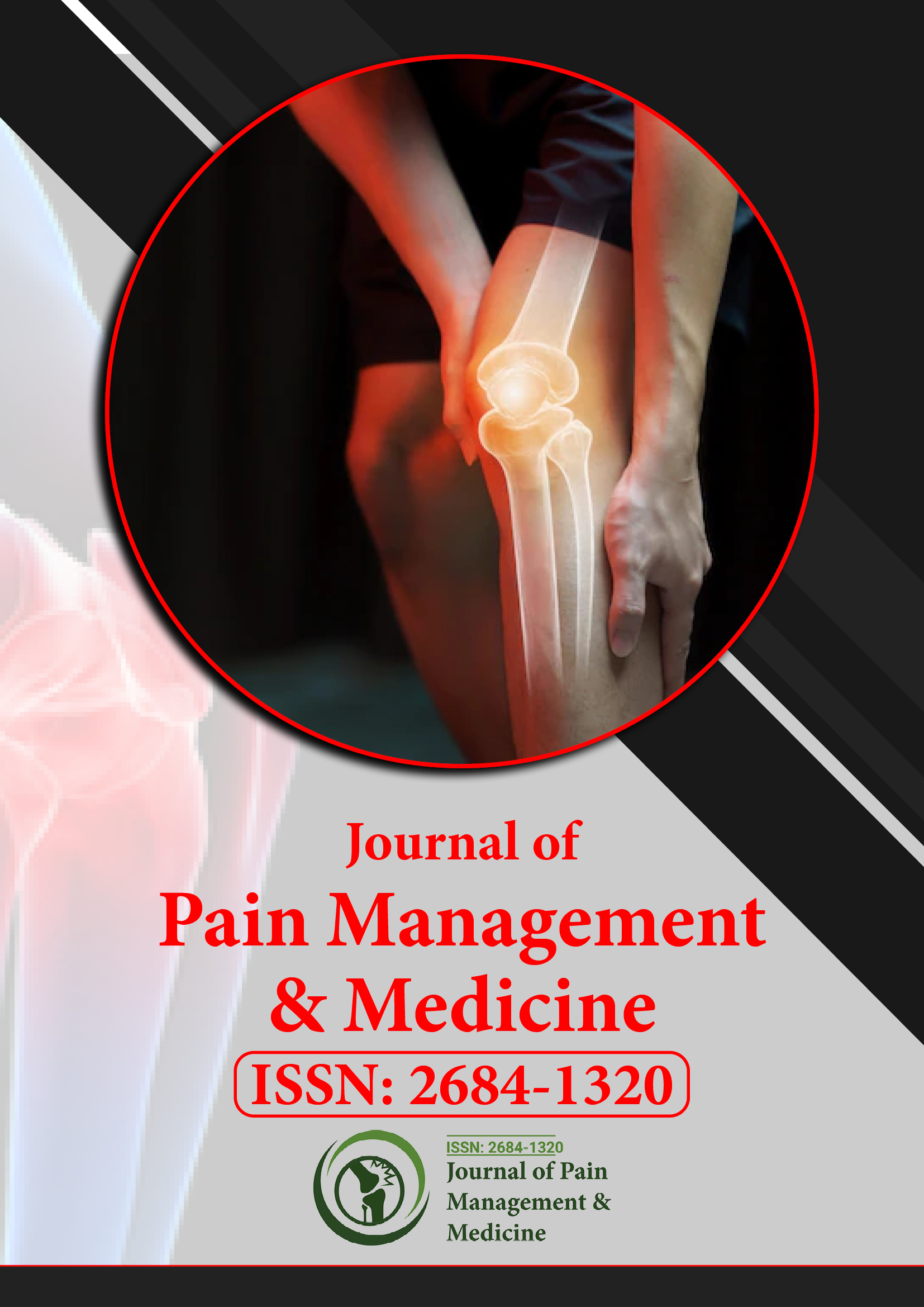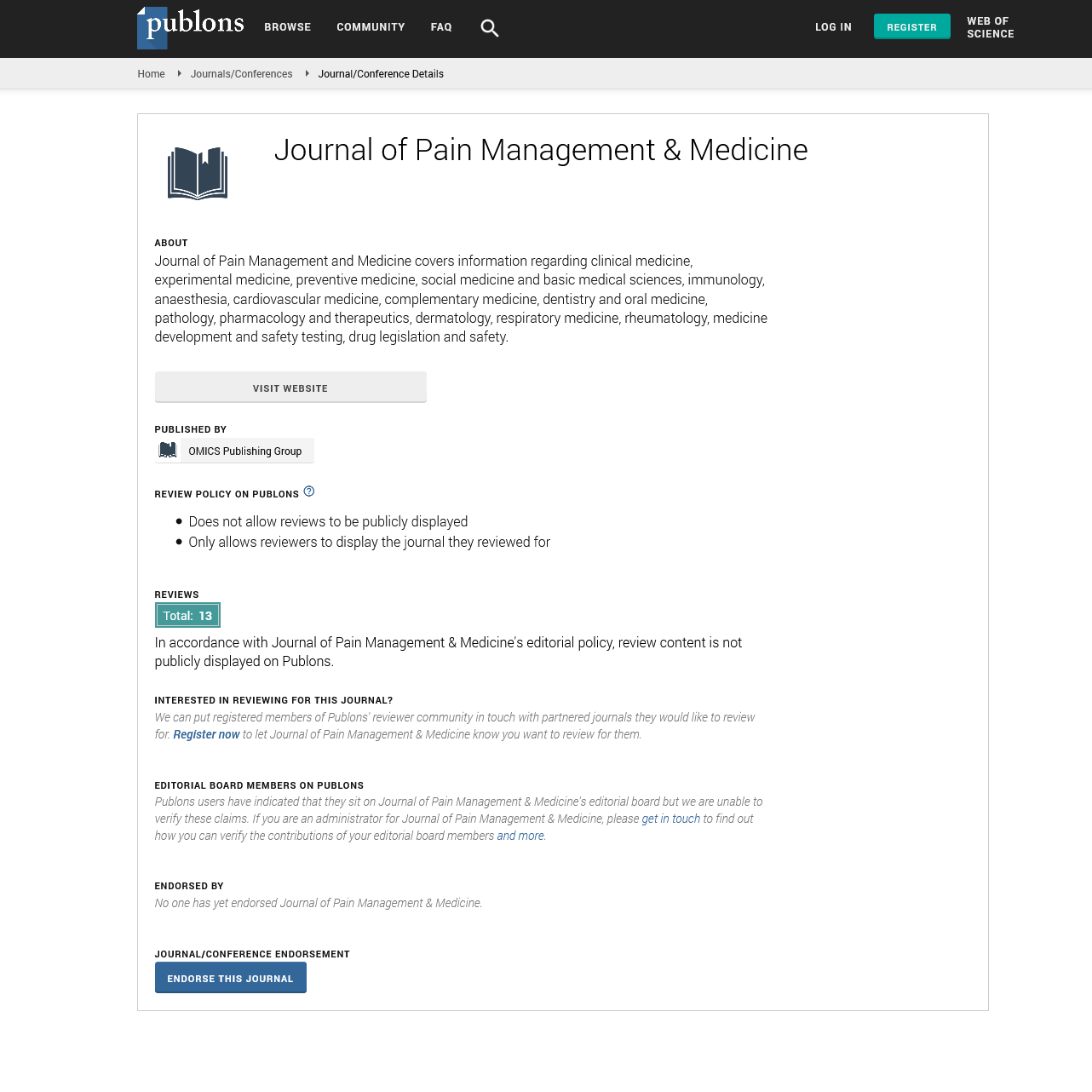Indexed In
- RefSeek
- Hamdard University
- EBSCO A-Z
- Publons
- Euro Pub
- Google Scholar
- Quality Open Access Market
Useful Links
Share This Page
Journal Flyer

Open Access Journals
- Agri and Aquaculture
- Biochemistry
- Bioinformatics & Systems Biology
- Business & Management
- Chemistry
- Clinical Sciences
- Engineering
- Food & Nutrition
- General Science
- Genetics & Molecular Biology
- Immunology & Microbiology
- Medical Sciences
- Neuroscience & Psychology
- Nursing & Health Care
- Pharmaceutical Sciences
Editorial - (2020) Volume 6, Issue 2
An Organized Review of Adductor Canal Block
Swedha Verma*Received: 13-Jul-2020 Published: 27-Jul-2020, DOI: 10.35248/2684-1320.20.6.139
Editorial
With great pleasure, we keep in touch with presentation our chips away at adductor trench square (ACB) after complete knee arthroplasty (TKA). ACB is a promising absense of pain created lately, which is led by infusing drugs in a pit named adductor channel encompassed by the sartorius muscle, average femoral muscle, and the adductor muscles. ACB is mostly to hinder the saphenous nerve which is the terminal tactile part of the femoral nerve, so it would not bargain engine work.
It is accounted for that ACB made great exhibitions as far as high fruitful agony control rate and low inconvenience frequency after TKA in the past path [1-3]. As per our meta-investigation, which included 8 randomized controlled preliminaries (RCT) including 434 patients (504 knees), ACB can altogether diminish visual simple scale (VAS) score very still ahead of schedule after activity, and improve quadriceps quality and preparation capacity. Simultaneously, ACB is on a par with femoral nerve hinder that it is viewed as the standard strategy for torment control after TKA on VAS score with movement, narcotic utilization, hip adductor quality, persistent fulfillment, et al. In this way, ACB may help the patients experiencing TKA get a quicker recuperation and a superior personal satisfaction. So as to assess the viability of ACB after TKA, we have led a RCT contrasting ACB and FNB as of late. In our investigation, forty patients who were planned to experience TKA were haphazardly isolated into two gatherings: adductor waterway square (ACB) gathering and femoral nerve square (FNB) gathering. The ACB bunch was given adductor channel hinder with ropivacaine (5 g/L, 20 ml) and 0.1 mg epinephrine thirty minutes before the medical procedure, while the FNB bunch was given femoral nerve obstruct with ropivacaine (3.33 g/L, 30 ml) and 0.1 mg epinephrine 30 minutes before the medical procedure. Every single other manner were comparative and the tasks were performed by a similar gathering of specialists. The Visual Analog Scale (VAS) scores very still and with movement, the knee joint scope of movement, the muscle quality of quadriceps femoris, all out Meperidine hydrochloride utilization, and the reactions and intricacies were recorded during our exploration. As indicated by the outcomes, ACB was not second rate compared to FNB regarding VAS score Meperidine hydrochloride utilization and the symptoms and intricacies. In any case, The ACB bunch demonstrated better exhibitions of the knee joint scope of movement and the muscle quality of quadriceps femoris. All in all, the adductor channel square had comparative early absense of pain impacts with the femoral nerve square when TKA was performed. In any case, contrasted and FNB, the ACB was increasingly useful to patients with respect to the early postoperative restoration to persistent. Concurring, the utilization of ACB post TKA is a decent choice for torment treatment advertisement deserving of being suggested.
REFERENCES
- Andersen HL, Zaric D. A dduct or canal bloc k or midthigh saphenous nerve block same but different name. Reg Anesth Pain Med. 2014;39:256-257.
- Jin SQ, Ding XB, Tong Y, Ren H, Chen ZX, et al. Effect of saphenous nerve block for post-operative pain on knee surgery: a meta-analysis. Int J Clin Exp Med. 2015;8:368-376.
- Hanson NA, Allen CJ, Hostetter LS, Nagy R, Derby RE, et al. Continuous ultrasound-guided adductor canal block for total knee arthroplasty: a randomized, double-blind trial. Anesth Analg. 2014;118:1370-1377.
Citation: Swedha V (2020) An organized Review of Adductor Canal Block. J Pain Manage Med 6:139. doi: 10.35248/2684-1320.20.6.139
Copyright: © 2020 Swedha V. This is an open access article distributed under the terms of the Creative Commons Attribution License, which permits unrestricted use, distribution and reproduction in any medium, provided the original work is properly cited.

